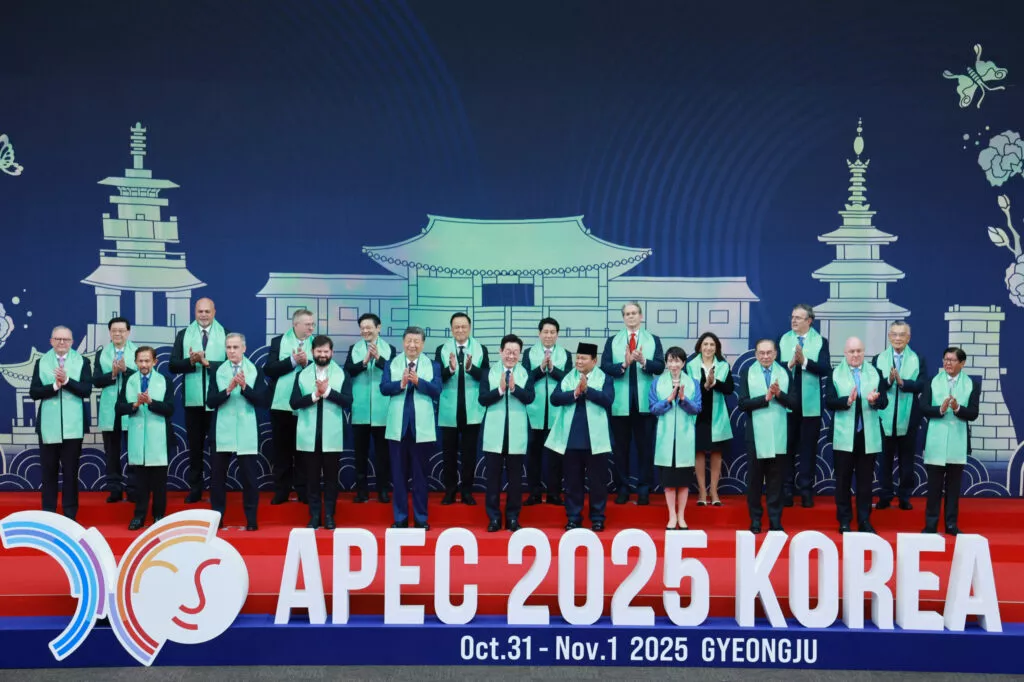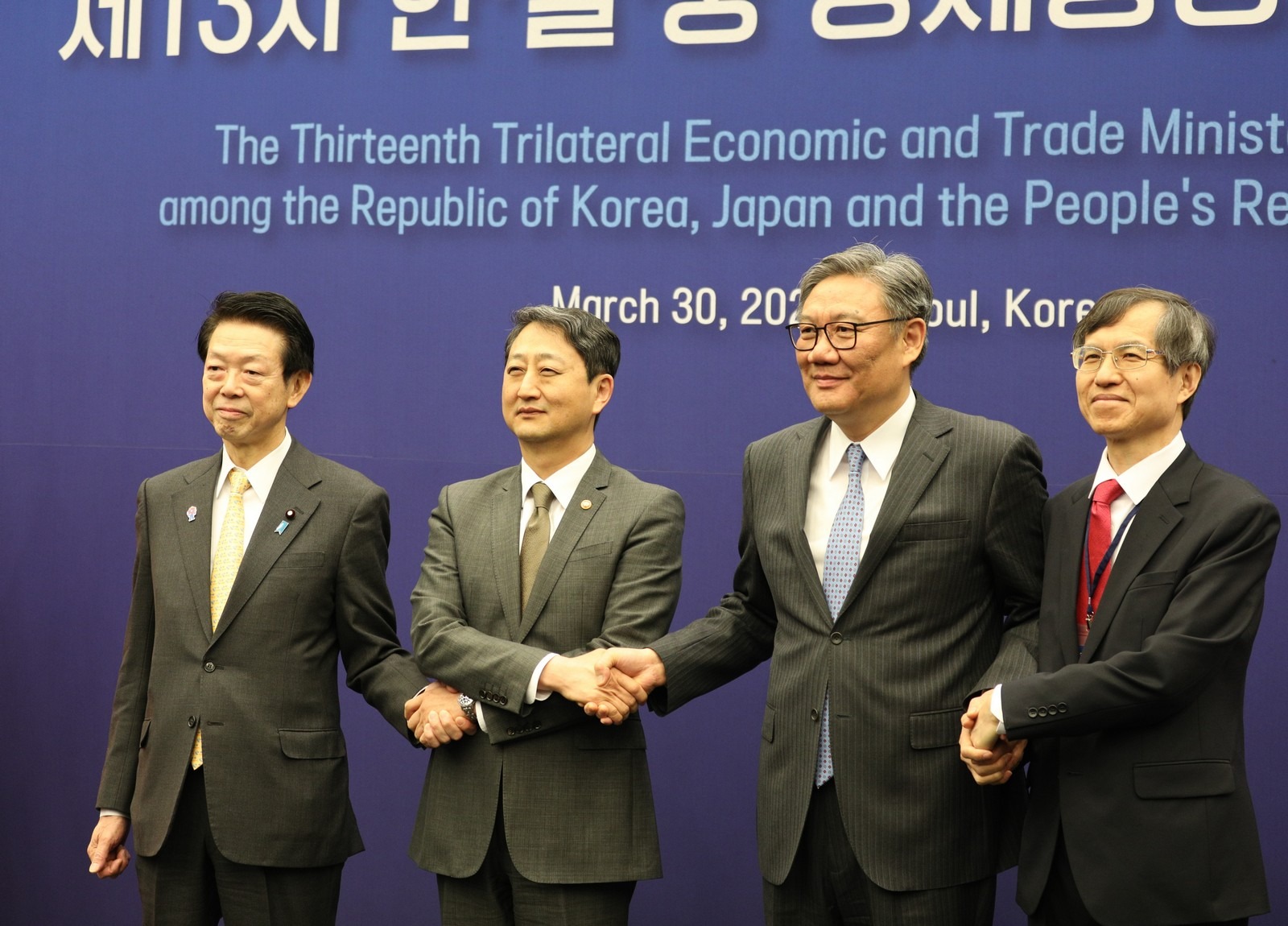When Diplomacy Still Works: Reflections on the Gyeongju APEC Summit
The final week of October marked a breathless diplomatic “super week” for South Korea. From October 31 to November 1, the 2025 APEC Meeting was held in the historic city of Gyeongju, drawing heads of state from around the world — including US President Donald Trump and Chinese President Xi Jinping – to Korean soil.
Expectations ahead of the summit were cautiously tempered. Both external and domestic circumstances were far from favorable. The war between Russia and Ukraine is still dragging on, keeping global tensions high, while strategic competition between the United States and China has hardened into a structural confrontation. Domestically, the newly-inaugurated Lee Jae-myung administration faced the dauting task of hosting such a large-scale event with minimal transition time following a presidential impeachment. The global trade landscape was equally fraught, with Trump’s tariff policy casting doubt on whether APEC members could find any common ground on free trade. Against this backdrop, many Koreans also wondered whether the long-stalled US-Korea tariff negotiations would finally reach a breakthrough.
Fortunately, the Gyeongju APEC Summit proved to be a diplomatic success for Seoul. It not only showcased the cultural beauty of Gyeongju to the world but also culminated in the Gyeongju Declaration. While the declaration omitted the explicit phrase “support for free trade”, it reaffirmed members ‘commitment to sustained cooperation in trade and investment. By addressing new structural challenges – from technological advancement to demographic change – the summit demonstrated that APEC still functions as a relevant forum for coordination, even in an era of growing rivalry.
Among the various sections, the chapter on energy and climate change was particularly noteworthy. Section 19 acknowledges the region’s growing electricity demand and underscores the need to ensure stable power supply through diversified energy sources and technologies. It calls for investment in power-system flexibility, modernisation of grid infrastructure, and greater regional interconnectivity to enhance resilience. Strikingly, it also states that “we acknowledge the important role that natural gas and LNG can play in providing sustainable, secure, affordable and reliable energy as well as flexibilities in our respective energy systems.”
While references to natural gas and LNG are not unprecedented, their explicit inclusion in a Leaders’ declaration — more commonly seen in ministerial statements — is relatively rare and thus noteworthy this year. Although natural gas remains a fossil fuel, it was explicitly recognized as part of a balanced and pragmatic approach to decarbonisation. The inclusion likely reflects the combined perspectives of both exporters and importers — the United States as the world’s largest LNG supplier; China with its expanding gas demand; and multiple Asia-Pacific economies seeking transitional stability. For the Lee Jae-myung government, which aspires to pursue more aggressive climate action, the emphasis on gas may appear paradoxical, yet it also reflects the diverse energy realities across the region.
Equally significant is the declaration’s focus on AI and digital transformation as emerging pillars of regional cooperation. Section 15 introduces the APEC AI Initiative, aimed at building regional capacity for responsible and human-centered artificial intelligence. Leaders committed to promoting secure and trustworthy AI applications, strengthening workforce training, and ensuring equitable access to emerging technologies. This reflects a growing consensus that AI is no longer seen merely as a tool for productivity but as a core governance issue with profound implications for future social and economic structures.
Another notable innovation was the explicit inclusion of demographic change as a strategic priority. With low birth rates and aging populations affecting much of the Asia-Pacific, the declaration adopted the APEC Collaborative Framework for Demographic Changes. Member economies committed to sharing policy experiences and creating inter-generational solutions that sustain productivity and social cohesion. By linking demographic challenges to economic policy, the document broadens the notion of “resilience” beyond economics to encompass people and communities.
In the economic domain, the Gyeongju Declaration reaffirmed commitments to innovation, structural reform, and open connectivity. While the statement avoided overt references to “free trade,” as forementioned, it did emphasize the need to strengthen global supply chains and reduce disruptions — an implicit rebuke to the tide of protectionism. In that sense, it represented a shared understanding that, despite the growing discourse on “economic security,” member economies remain deeply interdependent for long-term prosperity.
Bilateral developments for Korea were also tangible. On November 13, the joint factsheet released by the US and South Korean governments helped resolve much of the uncertainty that had lingered since the Gyeongju APEC Summit. Although substantial funds will still need to be invested in the United States, it was reassuring that key details were clarified – such as the decision to cap annual Korean investment in the United States at 20 billion dollars to mitigate potential impacts on Korea’s foreign exchange market, as well as the agreement on tariff arrangements for major export items like automobiles. While the sections concerning nuclear-powered submarines and the nuclear fuel cycle remain short on technical detail, it is nonetheless significant that both sides reached a broad understanding on the overall direction of cooperation.
The Gyeongju APEC Summit yields at least three broader insights.
First, dialogue matters, even amid war and competition. Although Russian President Vladimir Putin did not attend, his deputy, Alexei Overchuk, represented Moscow. Both President Trump and President Xi Jinping – whose participation had initially been uncertain – eventually came and even held bilateral talks. For a multilateral forum, this was meaningful: APEC once again proved its relevance not because it resolves conflicts, but because it creates the space where bilateral diplomacy can take place.
Second, the summit underscored that cooperation on technology, climate, and demographic challenges is not optional but fundamental for sustainable growth. The Gyeongju Declaration’s integration of AI governance, energy security, and social resilience indicates that the Asia-Pacific’s future agenda will be multidimensional, encompassing economic, digital, and human dimensions.
Third, even as protectionism and geopolitical tension dominate headlines, the appetite for freer trade and investment remains strong. Trade and investment remain the most fundamental engines of prosperity, and the summit reaffirmed a shared understanding that open economic exchange, rather than isolation, is the most reliable driver of growth.
Looking ahead, the Gyeongju APEC Summit will likely be remembered as a meaningful moment. For Korea, it demonstrated diplomatic competence under pressure and enhanced its image as a constructive middle power capable of bridging divides. For the region, it offered a template for realistic multilateralism, where ambition is balanced with pragmatism and competition coexists with cooperation.
The Asia-Pacific may remain divided by rivalries, yet the 2025 Gyeongju APEC Summit reminded the world that conversation itself is an achievement. In difficult times, modest successes carry significance. And when great powers can still meet, talk, and search for common ground, there is reason to believe that diplomacy — quiet, patient, and persistent — still works.
About the Author
Eunjung Lim is a Professor at the Division of International Studies, Kongju National University (KNU). She also serves as Vice President for International Affairs, Dean of the Institute of Korean Education and Culture, and Dean of the Institute of International Language Education at the same university. Her areas of specialization include international cooperation in the Indo-Pacific, comparative and global governance, and the energy, nuclear, and climate change policies of East Asian countries. Since 2018, she has served as a board member of the Korea Institute of Nuclear Non-proliferation and Control (KINAC) and currently serves as a member of the Policy Advisory Committee for the Ministry of Unification.
The opinions articulated above represent the views of the author(s) and do not necessarily reflect the position of the Asia-Pacific Leadership Network or any of its members. APLN’s website is a source of authoritative research and analysis and serves as a platform for debate and discussion among our senior network members, experts, and practitioners, as well as the next generation of policymakers, analysts, and advocates. Comments and responses can be emailed to apln@apln.network.
Image: APEC leaders stand for a group photo in Gyeongju, South Korea, on Nov. 1. Courtesy: AP/YONHAP




